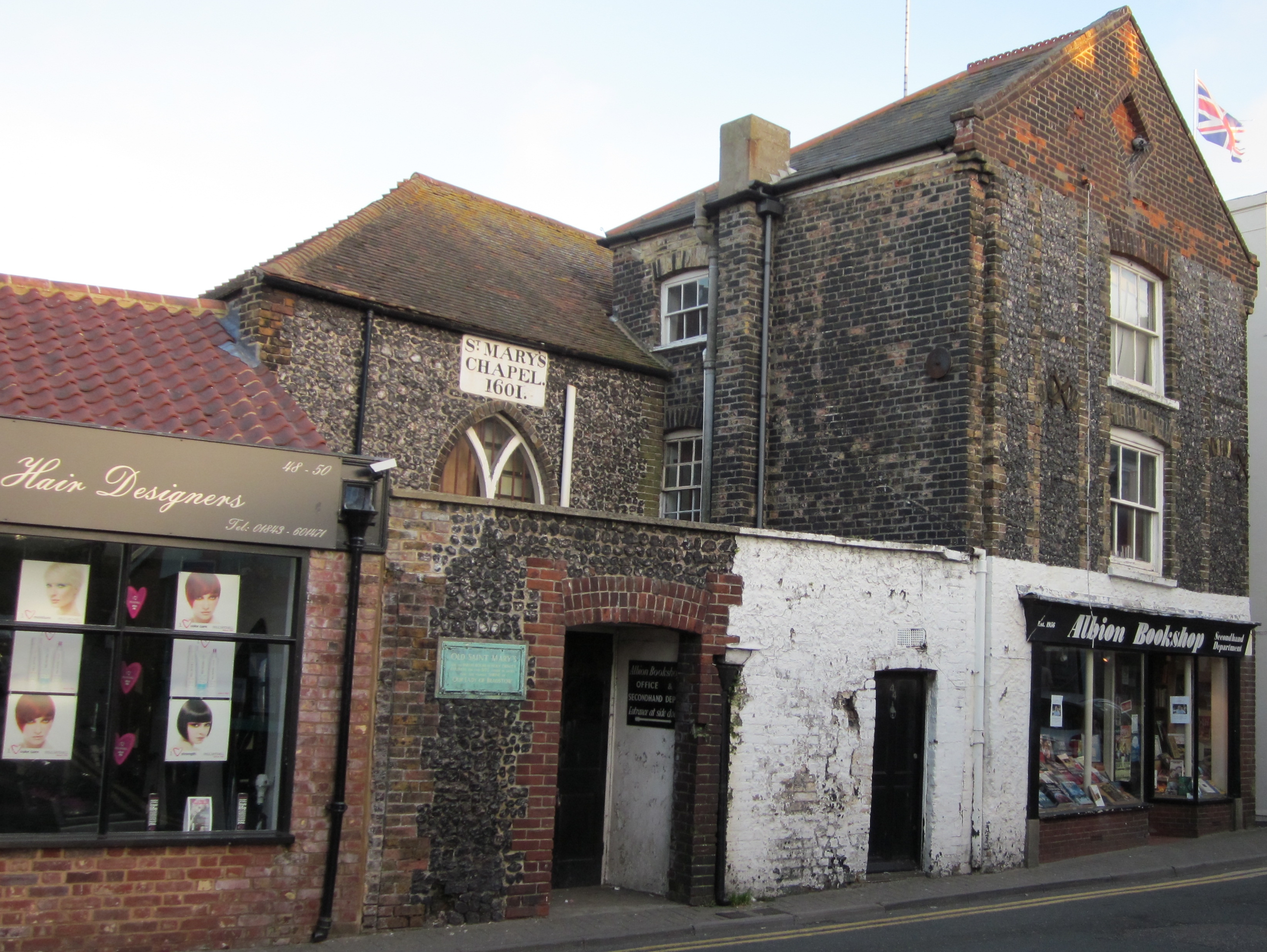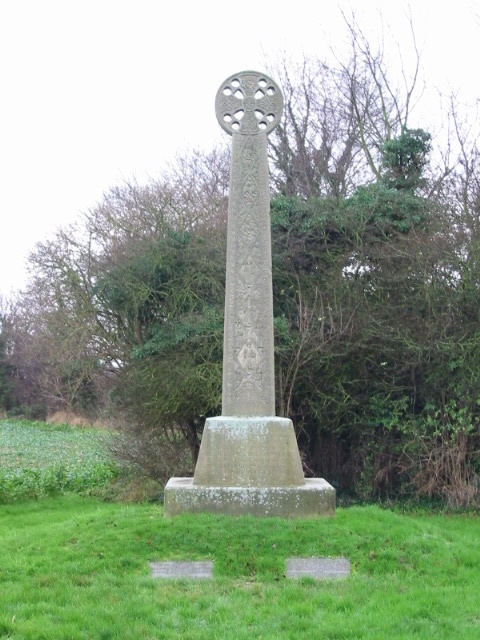|
Ebbsfleet, Thanet
Ebbsfleet is a hamlet near Ramsgate, Kent, at the head of Pegwell Bay. Historically it was a peninsula on the southern coast of the Isle of Thanet, marking the eastern end of the Wantsum Channel that separated Thanet from the Kentish mainland. It is in the civil parish of Minster-in-Thanet. Pegwell Bay is a natural harbour on the part of the coast nearest to the Continent, and consequently, Ebbsfleet is associated with two important arrivals in English history: Hengist and Horsa in 449 AD, said to have led the Anglo-Saxons in their conquest of Britain; and Augustine of Canterbury in 597 AD, who converted much of England to Christianity. Ebbsfleet is the titular see of the Bishop of Ebbsfleet, an episcopal visitor for the Province of Canterbury. Geography Ebbsfleet Lane marks the line of the peninsula today. The Wantsum Channel silted up and was reclaimed in the 15th century; all that remains of it is the channel of the River Stour, which enters the sea by Richborough Power S ... [...More Info...] [...Related Items...] OR: [Wikipedia] [Google] [Baidu] |
Ebbsfleet Valley
Ebbsfleet Valley is a new town and redevelopment area in Kent, South East England, and part of the Thames Gateway, southwest of Gravesend. Development is coordinated by the Ebbsfleet Development Corporation. It is named after the valley of the Ebbsfleet River, which it straddles. Although a small part of the site in the east lies within the borough of Gravesham, Ebbsfleet Valley primarily sits in the borough of Dartford. Toponymy The name Ebbsfleet is an artificial creation of a seventeenth-century antiquarian, partly inspired by the name of Ebbsfleet in Thanet, to the east. Redevelopment Much of the land is brownfield and was formerly used by industry; having been previously owned by the APCM, Blue Circle and most recently by Lafarge. The new community is planned to have a population of 40,000. Ebbsfleet International railway station was opened in November 2007 and provides services to Continental Europe on High Speed 1. Domestic services to St Pancras railway station in ... [...More Info...] [...Related Items...] OR: [Wikipedia] [Google] [Baidu] |
River Stour, Kent
The River Stour is a river in Kent, England that flows into the North Sea at Pegwell Bay. Above Plucks Gutter, where the Little Stour joins it, the river is normally known as the Great Stour. The upper section of the river, above its confluence with the East Stour, Kent, East Stour at Ashford, Kent, Ashford is sometimes known as the Upper Great Stour or West Stour. In the tidal lower reaches, the artificial Stonar Cut short cuts a large loop in the natural river. The Stour has Kent's second largest catchment area (the River Medway having the largest). The lower part of the river is tidal; its original mouth was on the Wantsum Channel, an important sea route in medieval times. The river has three major tributaries, and many minor ones. For much of its length, it flows in a generally south-west to north-east direction. The historic city of Canterbury is situated on the river, as are the former Cinque Ports, Cinque Port of Sandwich, Kent, Sandwich and the railway town of Ashford. ... [...More Info...] [...Related Items...] OR: [Wikipedia] [Google] [Baidu] |
Richborough Energy Park
Richborough Energy Park is a site of non-traditional power generation, on the site of the former Richborough power station close to the mouth of the River Stour near Sandwich, on the east coast of Kent, England. Site history The original Richborough power station operated from 1962 to 1996, with final demolition being undertaken in 2012. It originally burnt coal, but later converted to oil and that to the burning of Orimulsion. The station was also the site of an experimental wind turbine in 1989, which at 1MW was the biggest then installed anywhere in the United Kingdom. Current use The national grid interconnector from the original power station is still in place, and is now the grid link for the offshore Thanet Wind Farm. The site is the landing site for the ±400 kV 1,000 MW HVDC power cable from Belgium called Nemo Link, built by Siemens, which entered commercial service on 31 January 2019. Plans The current owner of the site, BFL Management Ltd, plan to bring ... [...More Info...] [...Related Items...] OR: [Wikipedia] [Google] [Baidu] |
Broadstairs
Broadstairs is a coastal town on the Isle of Thanet in the Thanet district of east Kent, England, about east of London. It is part of the civil parish of Broadstairs and St Peter's, which includes St Peter's, and had a population in 2011 of about 25,000. Situated between Margate and Ramsgate, Broadstairs is one of Thanet's seaside resorts, known as the "jewel in Thanet's crown". The town's coat of arms's Latin motto is ''Stella Maris'' (" Star of the Sea"). The name derives from a former flight of steps in the chalk cliff, which led from the sands up to the 11th-century shrine of St Mary on the cliff's summit. The town spreads from Haine Road in the west to Kingsgate (named after the landing of King Charles II in 1683), a hamlet in St Peter parish in the north, and to Dumpton in the south (named after the yeoman Dudeman who farmed there in the 13th century). The hamlet of Reading (formerly ''Reden'' or ''Redyng'') Street was established by Flemish refugees in the 17th cent ... [...More Info...] [...Related Items...] OR: [Wikipedia] [Google] [Baidu] |
Thanet Wind Farm
The Thanet Wind Farm (also sometimes called Thanet Offshore Wind Farm) is an offshore wind farm off the coast of Thanet district in Kent, England. On commissioning it was the world's largest offshore wind farm. It has a nameplate capacity (maximum output) of 300 MW and it cost £780O'Toole, SarahWorld’s biggest offshore wind farm opens today ''Global Energy Magazine'', 23 September 2010. Retrieved: 29 September 2010.–900 million (US$1.2–1.4 billion). Thanet is one of fifteen Round 2 wind projects announced by the Crown Estate in January 2004 but the first to be developed. It was officially opened on 23 September 2010,Shankleman, JessicaUK cuts ribbon on world's largest offshore wind farm''BusinessGreen'', 23 September 2010. Retrieved: 23 September 2010. when it overtook Horns Rev 2 as the biggest offshore wind farm in the world. It has since been overtaken by many others (medio 2017 it ranks 14th). Description The project covers an area of , with bet ... [...More Info...] [...Related Items...] OR: [Wikipedia] [Google] [Baidu] |
Sevenscore crops.
{{kent-geo-stub ...
Sevenscore is a hamlet on the B2048 secondary road about one mile (1.6 km) east of Minster-in-Thanet in Kent, England. It is in the civil parish of Minster-in-Thanet. It is among, and associated with the other hamlet settlements in west Thanet. Sevenscore Farm is a large presence in the hamlet and specialises in asparagus Asparagus, or garden asparagus, folk name sparrow grass, scientific name ''Asparagus officinalis'', is a perennial flowering plant species in the genus '' Asparagus''. Its young shoots are used as a spring vegetable. It was once classified in ... [...More Info...] [...Related Items...] OR: [Wikipedia] [Google] [Baidu] |
St Augustine's Cross
St Augustine's Cross is a stone memorial in Kent, in a fenced enclosure on the south side of Cottington Road, west of Cliffs End, at Pegwell Bay, Thanet, about west of Ramsgate, north of Richborough Roman Fort, and east of Canterbury, in the parish of Minster. The cross was erected in 1884 to commemorate the arrival of St Augustine in England in AD 597. It is believed to mark the place where St. Augustine met King Ethelbert for the first time. Background In 595, Pope Gregory I selected the monk Augustine to lead a mission to England to convert the Anglo Saxons in the Kingdom of Kent to Christianity. The Gregorian mission landed in Kent in 597. Bede wrote in his ''Ecclesiastical History of the English People'' that "Over against the eastern districts of Kent there is a large island called Thanet which, in English reckoning, is 600 hides or families in extent. It is divided from the mainland by the river Wantsum, which is about three furlongs wide, can be crossed in two ... [...More Info...] [...Related Items...] OR: [Wikipedia] [Google] [Baidu] |
Ecclesiastical History Of The English People
The ''Ecclesiastical History of the English People'' ( la, Historia ecclesiastica gentis Anglorum), written by Bede in about AD 731, is a history of the Christian Churches in England, and of England generally; its main focus is on the conflict between the pre-Schism Roman Rite and Celtic Christianity. It was composed in Latin, and is believed to have been completed in 731 when Bede was approximately 59 years old. It is considered one of the most important original references on Anglo-Saxon history, and has played a key role in the development of an English national identity. Overview The ''Historia ecclesiastica gentis Anglorum'', or ''An Ecclesiastical History of the English People'' is Bede's best-known work, completed in about 731. The first of the five books begins with some geographical background and then sketches the history of England, beginning with Julius Caesar's invasion in 55 BC. A brief account of Christianity in Roman Britain, including the martyrdom of St Alban ... [...More Info...] [...Related Items...] OR: [Wikipedia] [Google] [Baidu] |
Bede
Bede ( ; ang, Bǣda , ; 672/326 May 735), also known as Saint Bede, The Venerable Bede, and Bede the Venerable ( la, Beda Venerabilis), was an English monk at the monastery of St Peter and its companion monastery of St Paul in the Kingdom of Northumbria of the Angles (contemporarily Monkwearmouth–Jarrow Abbey in Tyne and Wear, England). Born on lands belonging to the twin monastery of Monkwearmouth–Jarrow in present-day Tyne and Wear, Bede was sent to Monkwearmouth at the age of seven and later joined Abbot Ceolfrith at Jarrow. Both of them survived a plague that struck in 686 and killed a majority of the population there. While Bede spent most of his life in the monastery, he travelled to several abbeys and monasteries across the British Isles, even visiting the archbishop of York and King Ceolwulf of Northumbria. He was an author, teacher (Alcuin was a student of one of his pupils), and scholar, and his most famous work, ''Ecclesiastical History of the English People ... [...More Info...] [...Related Items...] OR: [Wikipedia] [Google] [Baidu] |
Battle Of Wippedesfleot
The Battle of Wippedesfleot was a battle in 466 between the Anglo-Saxons (or Jutes), led by Hengest, and the Britons. It is described in the '' Anglo-Saxon Chronicle'' thus: :465: :465: Here Hengest and Æsc fought together against Welsh (= Britons) near Wippedesfleot and there slew 12 Welsh leaders, and one of their thanes was slain, whose name was Wipped. This battle is said to have resulted in much bloodshed and slaughter on both sides, to the extent that hostilities abated for a while thereafter. Some historians believe in a Saxon victory, but that is not what is mentioned in the text. The limited number of casualties is an indication that the battle was a small one. The number of ''warriors'' involved must not have reached 200 men. Wippedesfleot is thought to be Ebbsfleet in Kent, near Ramsgate. Its location made the author of the ''Historia Brittonum'' think that all Saxons had now been driven out of Britain. ''Wippedes'' is possibly a corruption of Latin ''oppidis'' ... [...More Info...] [...Related Items...] OR: [Wikipedia] [Google] [Baidu] |
Hugin (longship)
The Hugin is a reconstructed longship located at Pegwell Bay in Kent, England. It was a gift from the Danish government commemorating the 1500th anniversary of the arrival of Hengist and Horsa, leaders of the Anglo-Saxon invasion, at nearby Ebbsfleet. The ship is a replica of the much later ca. 890 Gokstad ship. The boat was built in Denmark whence it was sailed by 53 Danes to England in 1949. The ship landed at Viking Bay in Broadstairs, Kent, before returning to Denmark. In 1950 a copy was presented to the people of Thanet by the King of Denmark and placed in its current location. In 2005 the ship underwent major repairs by Thanet District Council assisted with EU funding. ''Hugin''’s arrival was presented in a newsreel short entitled "Kent Welcomes Viking Invaders", which British Pathé has uploaded to the internet. Footage from the newsreel was used in the 1965 '' Doctor Who'' serial ''The Time Meddler'' to represent an 11th-century Viking raiding party."Restoration" d ... [...More Info...] [...Related Items...] OR: [Wikipedia] [Google] [Baidu] |
Vortigern
Vortigern (; owl, Guorthigirn, ; cy, Gwrtheyrn; ang, Wyrtgeorn; Old Breton: ''Gurdiern'', ''Gurthiern''; gle, Foirtchern; la, Vortigernus, , , etc.), also spelled Vortiger, Vortigan, Voertigern and Vortigen, was a 5th-century warlord in Britain, known perhaps as a king of the Britons or at least connoted as such in the writings of Bede and Gildas. His existence is contested by scholars and information about him is obscure. He may have been the "superbus tyrannus" said to have invited Hengist and Horsa to aid him in fighting the Picts and the Scots, whereupon they revolted, killing his son in the process and forming the Kingdom of Kent. It is said that he took refuge in North Wales, and that his grave was in Dyfed or the Llŷn Peninsula. Gildas later denigrated Vortigern for his misjudgement and also blamed him for the loss of Britain. He is cited at the beginning of the genealogy of the early Kings of Powys. Medieval accounts Gildas The 6th-century cleric and historia ... [...More Info...] [...Related Items...] OR: [Wikipedia] [Google] [Baidu] |






